currently known as baudin’s black cockatoo, but i prefer long-billed because it’s more descriptive and not named after some dead colonist (see also pink cockatoo). i used to have trouble distinguishing them from their short-billed siblings, but now i think that’s because i had only seen the short-billed species.
SONY DSC-RX10M4 + 8.8-220mm f/2.4-4
ISO 100, 219.8 mm, f/4.0, 1/800
SONY DSC-RX10M4 + 8.8-220mm f/2.4-4
ISO 250, 220.0 mm, f/4.0, 1/800
SONY DSC-RX10M4 + 8.8-220mm f/2.4-4
ISO 250, 220.0 mm, f/4.0, 1/800
SONY DSC-RX10M4 + 8.8-220mm f/2.4-4
ISO 200, 220.0 mm, f/4.0, 1/800
i never realised our magpies can have a hooked beak, just like butcherbirds. makes sense, they’re closely related and in fact are from the same family.
poor bloke might have lost an eye :(
SONY DSC-RX10M4 + 8.8-220mm f/2.4-4
ISO 1600, 219.8 mm, f/4.0, 1/640
SONY DSC-RX10M4 + 8.8-220mm f/2.4-4
ISO 2000, 219.3 mm, f/4.0, 1/640
the largest pardalote, whereas the spotted pardalote is the smallest. but even so, this is not a large bird by any means; it’s probably somewhere between 9 and 15 grams.
SONY DSC-RX10M4 + 8.8-220mm f/2.4-4
ISO 640, 220.0 mm, f/4.0, 1/800
SONY DSC-RX10M4 + 8.8-220mm f/2.4-4
ISO 640, 220.0 mm, f/4.0, 1/800
SONY DSC-RX10M4 + 8.8-220mm f/2.4-4
ISO 640, 220.0 mm, f/4.0, 1/800
SONY DSC-RX10M4 + 8.8-220mm f/2.4-4
ISO 640, 220.0 mm, f/4.0, 1/800
SONY DSC-RX10M4 + 8.8-220mm f/2.4-4
ISO 800, 220.0 mm, f/4.0, 1/800
there were so many grey currawongs that morning at the weir. i saw them and heard them calling from every direction the whole time i was there.
most recordings of grey currawong calls are for subspecies that are not found in western australia, and those other subspecies sound completely different to our “leaden crow-shrikes”. these two are the only recordings i’ve found for our subspecies, S. v. plumbea, and only the former was what i heard.
notice the clarity of each note as it falls off, and now imagine how eerie several concurrent currawongs would sound echoing through a valley.
SONY DSC-RX10M4 + 8.8-220mm f/2.4-4
ISO 500, 220.0 mm, f/4.0, 1/400
ohhhhhh my god, a ringneck walked right up to me, flew up onto the dam pipeline, and met me at eye level less than a metre away. they chirped a few times, inspected me, then left. sadly i missed the focus on most of these, but look at how close they got, even before any of that!! 35mm equivalent: 600, 600, 600, 278, 278, 341mm
SONY DSC-RX10M4 + 8.8-220mm f/2.4-4
ISO 2000, 220.0 mm, f/4.0, 1/800
SONY DSC-RX10M4 + 8.8-220mm f/2.4-4
ISO 1600, 220.0 mm, f/4.0, 1/800
SONY DSC-RX10M4 + 8.8-220mm f/2.4-4
ISO 1000, 220.0 mm, f/4.0, 1/800
SONY DSC-RX10M4 + 8.8-220mm f/2.4-4
ISO 1250, 101.6 mm, f/4.0, 1/800
SONY DSC-RX10M4 + 8.8-220mm f/2.4-4
ISO 1250, 101.6 mm, f/4.0, 1/800
SONY DSC-RX10M4 + 8.8-220mm f/2.4-4
ISO 800, 124.9 mm, f/4.0, 1/800
mundaring weir is a good place to see black cockatoos. indeed the first blockies i ever photographed were just down the road from there, and the pipeline itself is decorated with them. while standing on the dam wall, i hear those unmistakable rusty windmills cross the water from afar. i still had my shutter speed set for landscapes. oh well.
SONY DSC-RX10M4 + 8.8-220mm f/2.4-4
ISO 160, 220.0 mm, f/5.6, 1/125
SONY DSC-RX10M4 + 8.8-220mm f/2.4-4
ISO 100, 220.0 mm, f/5.6, 1/125
SONY DSC-RX10M4 + 8.8-220mm f/2.4-4
ISO 200, 14.2 mm, f/3.2, 1/400
SONY DSC-RX10M4 + 8.8-220mm f/2.4-4
ISO 320, 90.5 mm, f/4.0, 1/400
FUJIFILM X-T30 II + Canon EF-S 55-250mm f/4.0-5.6 IS STM
ISO 500, 250.0 mm, f/5.6, 1/2000
FUJIFILM X-T30 II + Canon EF-S 55-250mm f/4.0-5.6 IS STM
ISO 500, 250.0 mm, f/5.6, 1/2000
FUJIFILM X-T30 II + Canon EF-S 55-250mm f/4.0-5.6 IS STM
ISO 640, 250.0 mm, f/5.6, 1/2000
FUJIFILM X-T30 II + Canon EF-S 55-250mm f/4.0-5.6 IS STM
ISO 640, 250.0 mm, f/5.6, 1/2000
FUJIFILM X-T30 II + Canon EF-S 55-250mm f/4.0-5.6 IS STM
ISO 640, 250.0 mm, f/5.6, 1/2000
FUJIFILM X-T30 II + Canon EF-S 55-250mm f/4.0-5.6 IS STM
ISO 640, 250.0 mm, f/5.6, 1/2000
FUJIFILM X-T30 II + Canon EF-S 55-250mm f/4.0-5.6 IS STM
ISO 640, 250.0 mm, f/5.6, 1/2000
FUJIFILM X-T30 II + Canon EF-S 55-250mm f/4.0-5.6 IS STM
ISO 640, 250.0 mm, f/5.6, 1/2000
FUJIFILM X-T30 II + Canon EF-S 55-250mm f/4.0-5.6 IS STM
ISO 5000, 250.0 mm, f/8.0, 1/1250
FUJIFILM X-T30 II + Canon EF-S 55-250mm f/4.0-5.6 IS STM
ISO 2500, 250.0 mm, f/5.6, 1/1000
FUJIFILM X-T30 II + Canon EF-S 55-250mm f/4.0-5.6 IS STM
ISO 2500, 250.0 mm, f/5.6, 1/1000
FUJIFILM X-T30 II + Canon EF-S 55-250mm f/4.0-5.6 IS STM
ISO 2500, 250.0 mm, f/5.6, 1/1000
see also
FUJIFILM X-T30 II + Canon EF-S 55-250mm f/4.0-5.6 IS STM
ISO 8000, 250.0 mm, f/5.6, 1/1000
FUJIFILM X-T30 II + Canon EF-S 55-250mm f/4.0-5.6 IS STM
ISO 6400, 180.0 mm, f/5.6, 1/1000
Nikon D3200 + AF-S VR Zoom-Nikkor 70-300mm f/4.5-5.6G IF-ED
Nikon D3200 + AF-S VR Zoom-Nikkor 70-300mm f/4.5-5.6G IF-ED
Google Pixel 8
NIKON D3200 + AF-S VR Zoom-Nikkor 70-300mm f/4.5-5.6G IF-ED
ISO 640, 300.0 mm, f/8.0, 1/1000
in darktable, turning the filmic rgb > look > contrast down can help with harshly lit photos. a lot of the improvement seems to come from allowing you to use a much higher latitude %, which would normally go out of bounds if you tried to go that high. compare the following, clockwise from top left:
Nikon D3200 + AF-S VR Zoom-Nikkor 70-300mm f/4.5-5.6G IF-ED
edited in darktable and audacity with a workflow like:
$ ffmpeg -i _DSC0774.MOV -an -c:v png 20250221_0_v000/\%05d.png # for darktable
$ ffmpeg -i _DSC0774.MOV -vn -c:a copy 20250221_0_v000/audio.wav # for audacity
$ ffmpeg -i 20250221_0_v000/audio-audacity-hpf-240Hz-48dB.wav -pattern_type glob -i '20250221_0_v000/darktable_exported/*.png' -c:a aac -b:a 192k -c:v libx264 -preset veryslow -crf 16 -pix_fmt yuv420p 20250221_0_v000/20250221_0_v000_crf16.mp4

calm, comfy, cosy (bell miner)
Nikon D3200 + AF-S VR Zoom-Nikkor 70-300mm f/4.5-5.6G IF-ED
ISO 400, 155 mm, f/6.3, 1/2500
not to be confused with monkey mia
Nikon D3200 + AF-S DX NIKKOR 55-300mm f/4.5-5.6G ED VR
Nikon D3200 + AF-S DX NIKKOR 55-300mm f/4.5-5.6G ED VR
Nikon D3200 + AF-S DX NIKKOR 55-300mm f/4.5-5.6G ED VR
ISO 400, 105 mm, f/8, 1/1250
Nikon D3200 + AF-S DX NIKKOR 55-300mm f/4.5-5.6G ED VR
ISO 400, 102 mm, f/8, 1/800
Nikon D3200 + AF-S DX NIKKOR 55-300mm f/4.5-5.6G ED VR
ISO 200, 300 mm, f/8, 1/500
Nikon D3200 + AF-S DX NIKKOR 55-300mm f/4.5-5.6G ED VR
ISO 200, 68 mm, f/8, 1/320
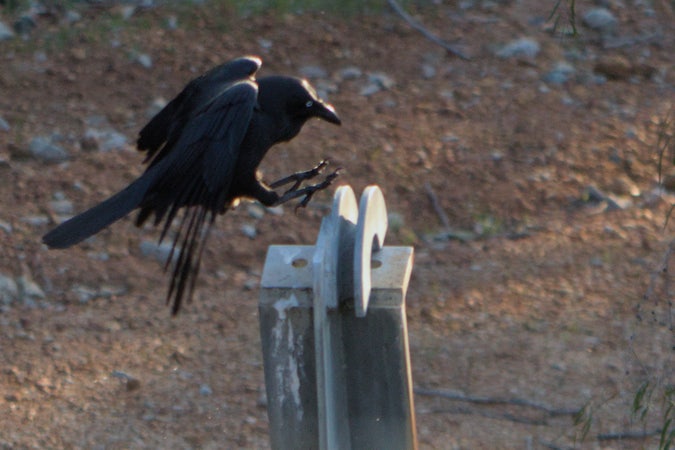
(details)
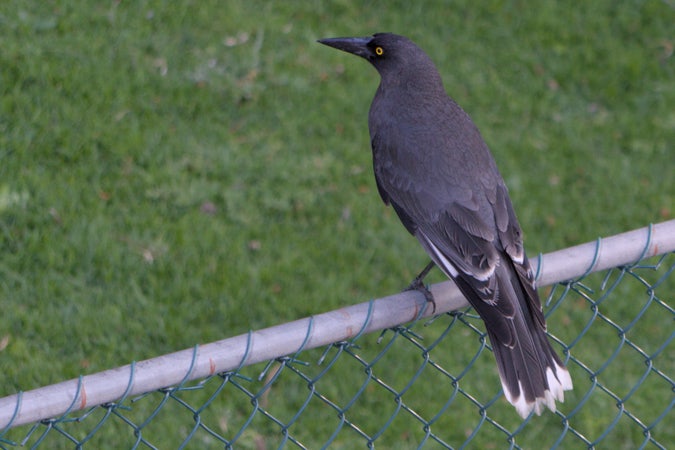
i saw my first ever currawong! this guy belongs to the western subspecies of grey currawong (Strepera versicolor plumbea), historically known as the leaden crow-shrike. the wikipedia page listed it as a “leaden cuckoo-shrike” in some places, but checking the cited Whitlock (1910), that seems to have been a mistake.
(details)
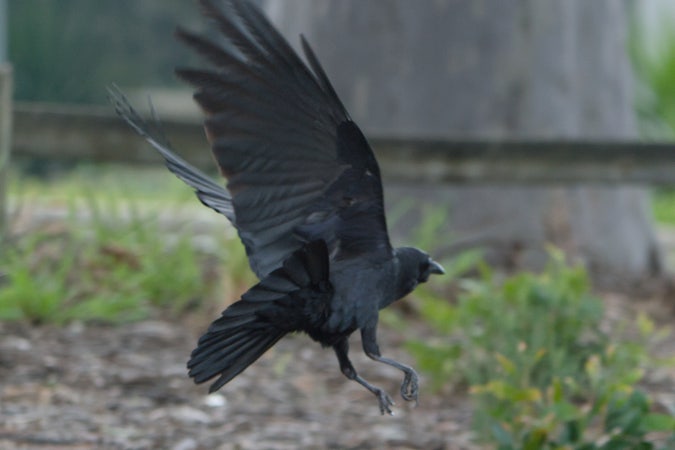
(details)
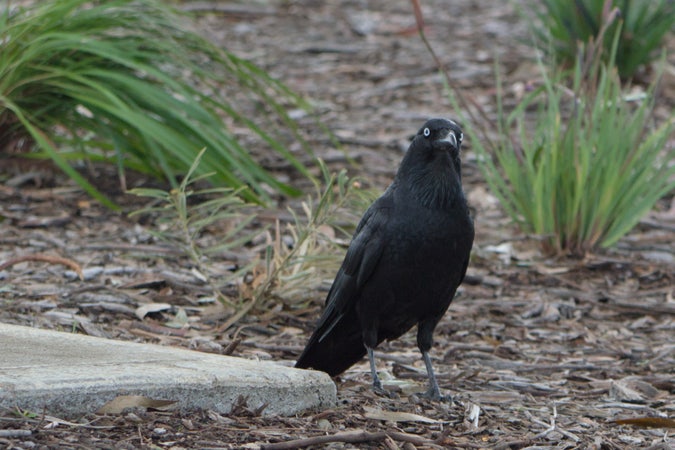
(details)
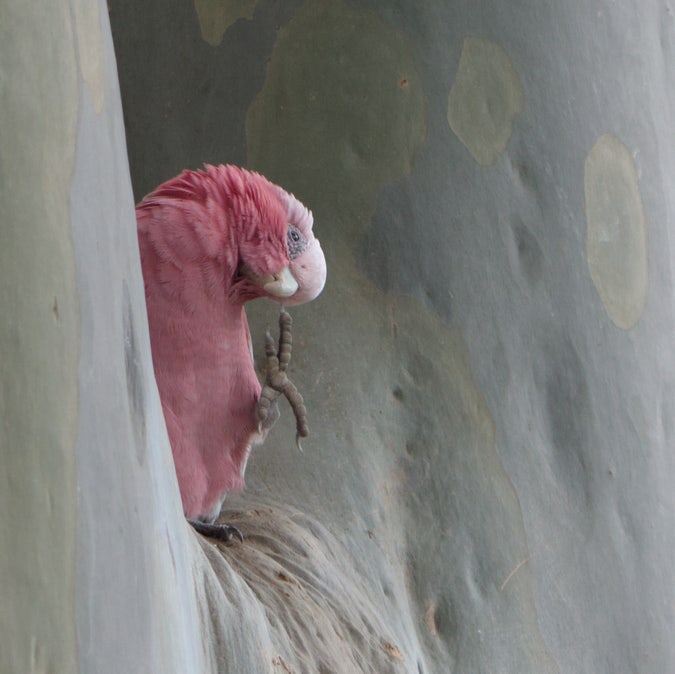
(details)
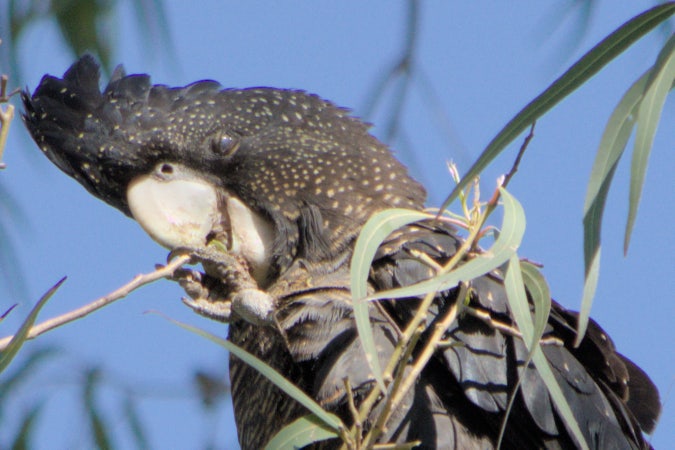
(details)
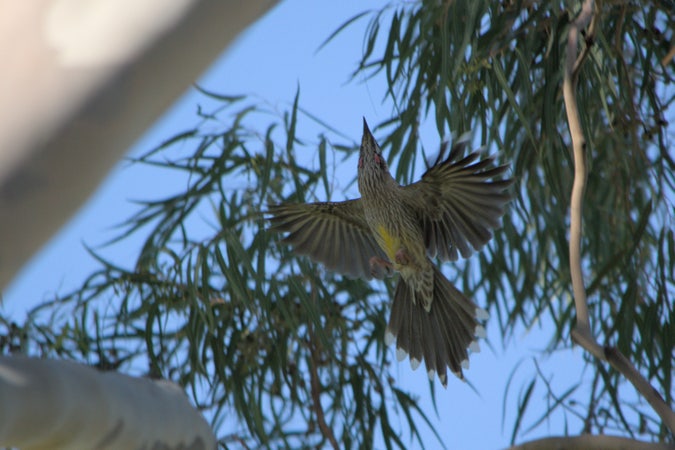
(details)

(details)
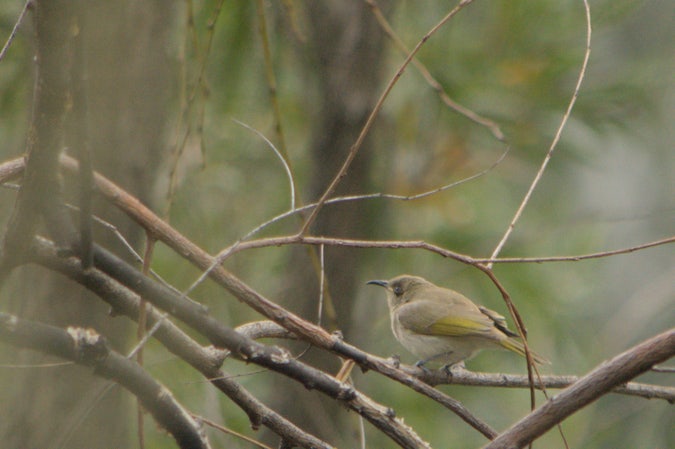
i was unsure of this one and this other one, because they seemed way too round to be brown honeyeaters! but now i think these are just juveniles.
anyone know why cohost’s thumbnailer destroys this?
(details)
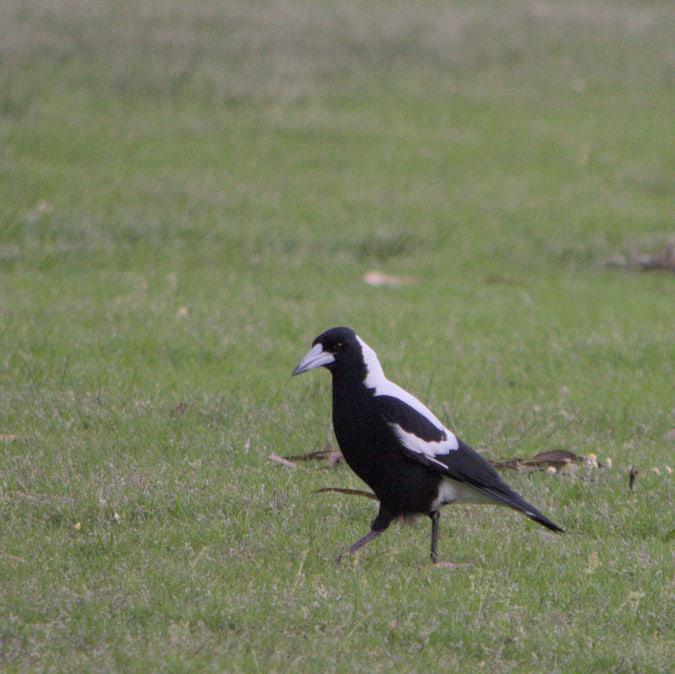
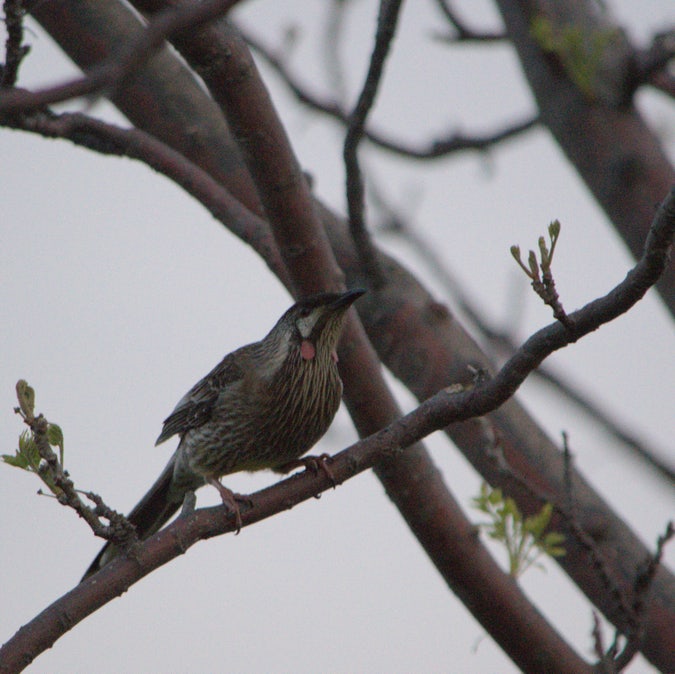
testing my new camera right after sunset. not gonna pretend these are great shots, but the fact that i can get something almost usable out of it at iso 3200 is neat.
(details)
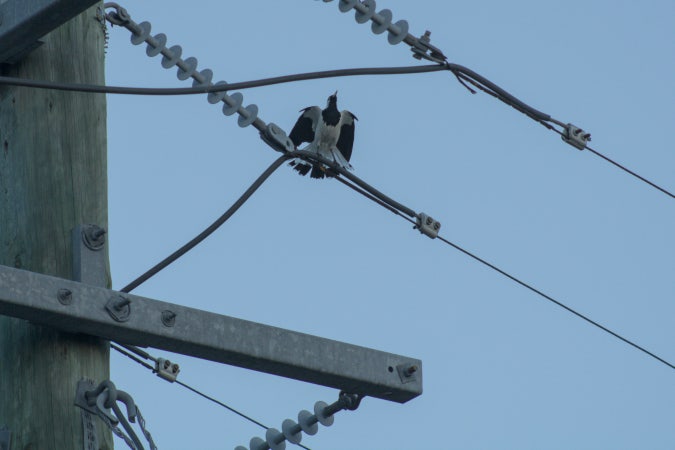
(details)
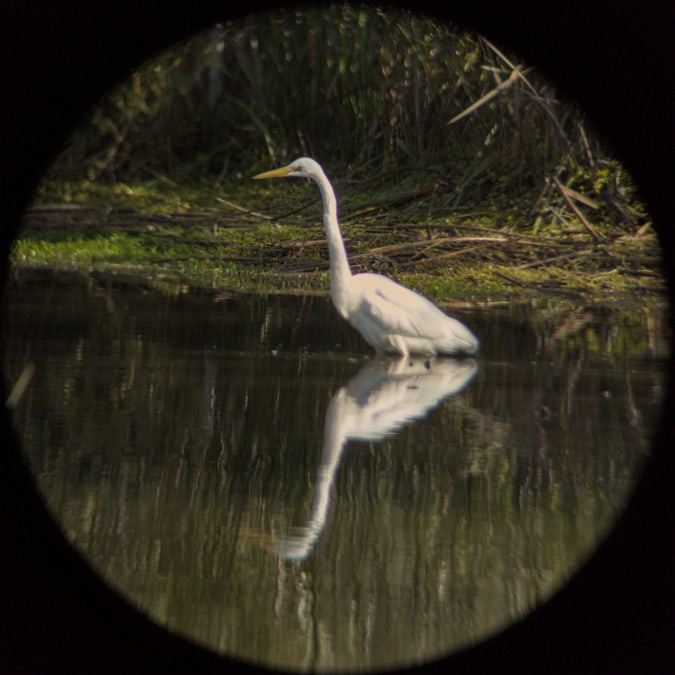
(details)
Hiya,
What are you using to take photos of birds? Those circle photos are really cool, are they edited or come from a particular kind of camera or something?
Thanks
thanks! the circles are from taking them through binoculars (this camera through these, for the most part). sometimes i end up zooming or cropping the circle out of frame.
this is pretty cumbersome, since any movement or tilt of my phone relative to the binoculars can ruin the shot, but hey, we make do with the tools we have :)